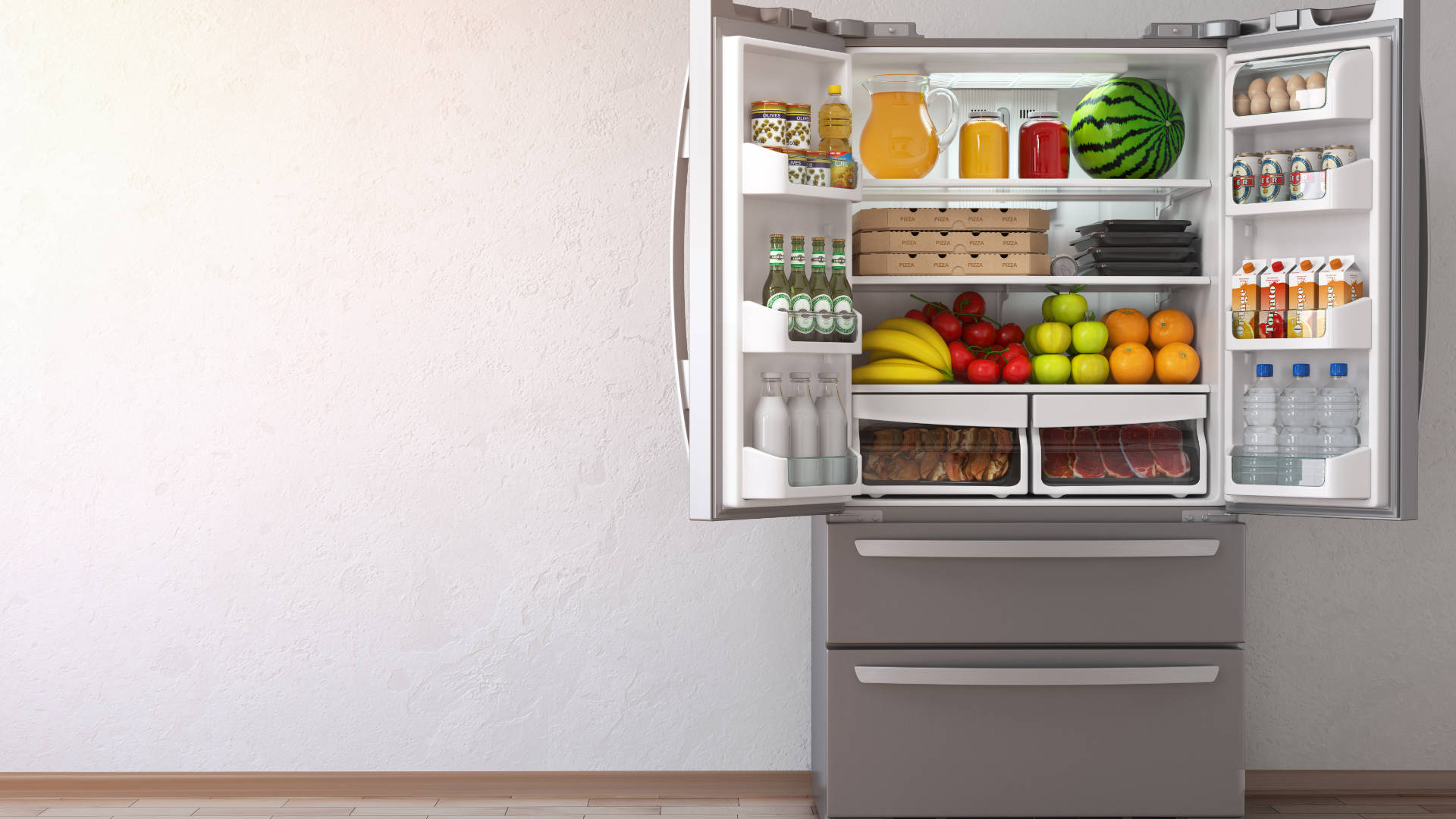
If your LG refrigerator is not cooling as it should be, then there is most likely a problem with one of the refrigerator’s components that will need to be fixed. But before you can fix the problem, you first need to find the cause.
In this article, we will cover all of the most common causes so you can diagnose the culprit. This article covers all major LG refrigerator models, including:
LFX21976ST
LFX25950SB
LFX25950SW
LFX25950TT
LFX25976ST
LFX25991ST
LFX28978SB
LFX28978SW
LFX28979ST
LFX31925ST
LFX31935ST
LFX31945ST
LMX25984SW
LMX25986ST
LMX28988SB
LMX28988ST
LMX28988SW
LRDC22743ST
LRDC22744ST
LRSC26980SB
LSFS213ST
Check if the Condenser Coils Are Dirty
The first component to check is the condenser coils. Their role is to dissipate heat when refrigerant goes through them. Sometimes they get dirty and this causes your refrigerator to not be able to cool properly.
To check the condenser coils you need to:
- Turn your refrigerator off at the wall, and pull your refrigerator out so you can access the back of it.
- Remove the lower back panel and locate the coils.
- Check the coils to see if they are dirty. If they are clean, then this means they are not the cause of the problem, so you can move on to the next component to check.
- However, if they are dirty, give the condenser coils a good clean. You can use a vacuum cleaner to get all the dust out of them.
- Once cleaned, reattach the back panel, put your refrigerator back in its place, and then turn the power back on.
Check the Condenser Fan Motor
The next component to check is the condenser fan motor. The purpose of the fan motor is to pull air through the condenser coils. When it stops working correctly, your fridge won’t cool.
You can check the condenser fan motor by:
- Turning the refrigerator off at the wall and pulling it out so you can access the back panel.
- Remove the lower back panel and first check the fan blade to make sure it can spin around without obstruction.
- If you can’t spin it around by hand the whole way around, then it is defective and should be replaced.
- If it does spin around freely, you will need to check the fan for continuity by using a multimeter. If the motor has continuity, then it is working correctly; if it doesn’t have continuity, then it is faulty and should be replaced.
Check the Evaporator Fan Motor
Another possible cause of your LG refrigerator not cooling is a faulty evaporator fan motor. Depending on the exact model of your refrigerator, there will either be one or multiple evaporator fans. When they stop working, your refrigerator will not cool, as cold air is not being circulated from the freezer to the fridge.
To check the evaporator fan motor:
- Turn the power off to your refrigerator.
- Locate the evaporator fan motor – for refrigerators with one motor, it will be in the freezer compartment.
- Remove the cover and then try to turn the fan blade around manually.
- If you can’t turn it the whole way around, then it is likely defective and should be replaced. If the motor is making a lot of noise when operating, this is another sign that it is defective and should also be replaced.
- If you can turn the blade around but it isn’t working, you should test the motor for continuity with a multimeter. If the test shows continuity, then it is fine, and if it doesn’t, it will need to be replaced.
Test the Start Relay
If you still haven’t solved the problem, then the next component to inspect is the start relay. This component of your refrigerator works with the start winding to make the compressor operate correctly. When it becomes faulty, the compressor will not work correctly, causing your refrigerator to not cool.
You can check it by:
- Turning your refrigerator off at the power source and pulling your refrigerator out from the wall so you can access the back of it.
- Locate the start relay. You can find it at the back of the fridge behind the lower back panel connected to the compressor.
- Check the start relay for continuity by using a multimeter.
- If it has continuity, then it will be working correctly, and you can move on to checking the next component. However, if it doesn’t have continuity, then it will need to be replaced. Also, check that the start relay doesn’t have a burnt odor coming from it. If it does, you should also replace it.
Check the Temperature Control Thermostat
Another possible cause of your refrigerator not cooling is a faulty temperature control thermostat. The thermostat is responsible for directing voltage to the evaporator fan motor, the compressor, and, if your fridge has one, the condenser fan motor.
You can check the temperature control thermostat by:
- Finding the thermostat inside the fridge.
- Turn the thermostat from the lowest setting to the highest setting, and see if you can hear it click.
- If you can hear a click, then it is not defective, so move on to the next component to check.
- If you can’t hear a click, you need to check the temperature control thermostat with a multimeter. If the multimeter shows the thermostat to have no continuity, then it needs to be replaced.
Test the Start Capacitor
The start capacitor is another possible cause of a refrigerator not cooling. The start capacitor helps to power up the compressor when it starts up, and when it doesn’t work, the compressor will not be able to start, which results in your refrigerator not cooling correctly.
You can check it by:
- Turning your refrigerator off at the wall and pulling it out so you can access the back panel.
- Remove the back panel and locate the start capacitor.
- Use a multimeter to test it for continuity.
- If it doesn’t have continuity, it needs to be replaced. But if it does have continuity, then it is working fine.
Test the Thermistor
The purpose of the thermistor is to monitor the temperature in the refrigerator and then communicate it to the control board. When it becomes defective, it will cause other components in the refrigerator to not work correctly.
The best way to check if it is faulty is to:
- Make sure the refrigerator is switched off.
- Once you’ve located the thermistor, use a multimeter to check if the thermistor changes resistance when the refrigerator changes temperature.
- If it doesn’t, this shows that the thermistor doesn’t have continuity and will need to be replaced. However, if it does, then it is fine and is not the cause of the problem.
Check the Compressor
The next component to check is the compressor. The compressor is a pump that compresses the refrigerant and then circulates it through the evaporator and condenser coils. When it becomes faulty, the cooling system will stop working as it should. It’s quite an uncommon cause of the problem, so check all of the other possible causes first.
You can check the compressor by:
- Making sure the power is turned off to your refrigerator and pulling it out from the wall.
- Remove the lower back panel and locate the compressor.
- Use your multimeter to test the continuity between the electrical pins on the side of the compressor. If your test shows an open circuit, the compressor is likely defective and will need to be replaced by an experienced technician.
Check the Temperature Control Board
The temperature control board is another possible cause of the problem (albeit not a common one). This component provides the required voltage to the compressor and the fan motors, and when it becomes defective, it will stop the cooling system from working correctly.
Unfortunately, the temperature control board is difficult to test, so if you have tried all of the other components listed above, you should consider replacing the temperature control board and seeing if that solves the problem.
Replace the Main Control Board
If you have checked every other component above and still haven’t found anything wrong, then the final action to take is to replace the main control board. It is quite uncommon for this to be the cause, but it can happen.

Your Guide to Whirlpool Microwave Replacement Parts

What to Do When Your Kenmore Dryer Won’t Start

How to Resolve the LG Washer LE Error Code

Why Does My Oven Smell Like Gas? Causes and What to Do

Maytag Dryer Not Heating? Here’s How to Fix It

6 Common Reasons Your Speed Queen Dryer Isn’t Heating

8 Reasons Your Samsung Refrigerator Is Not Cooling

9 Most Reliable Washer and Dryer Brands

How to Get Ink out of Your Dryer the Easy Way

Why Is My Fridge Making Noise That Stops When the Door Is Open?

Frigidaire Refrigerator Error Code H1: Causes & Solutions

How to Clean a Dryer Vent Without Moving the Dryer

9 Reasons Your LG Refrigerator Isn’t Cooling

LG Refrigerator Not Making Ice? Here’s What To Do!


